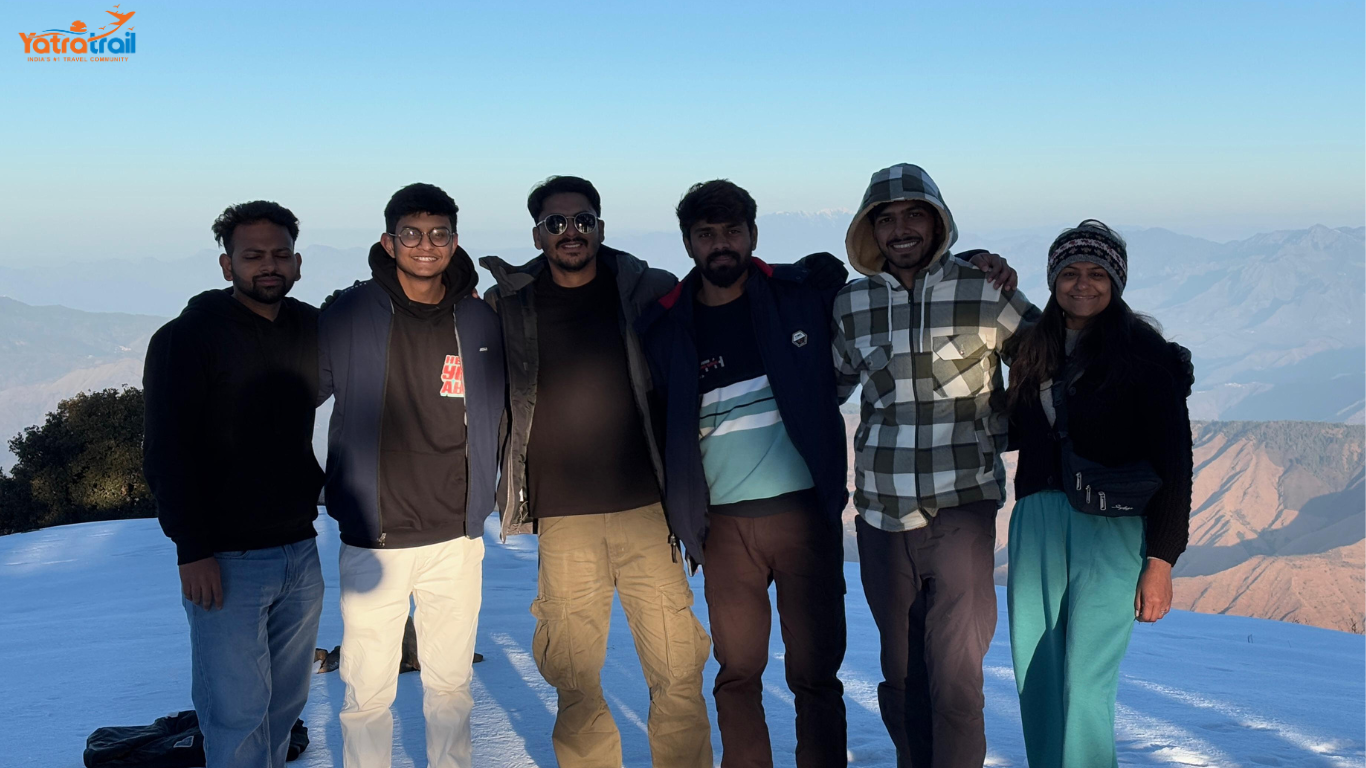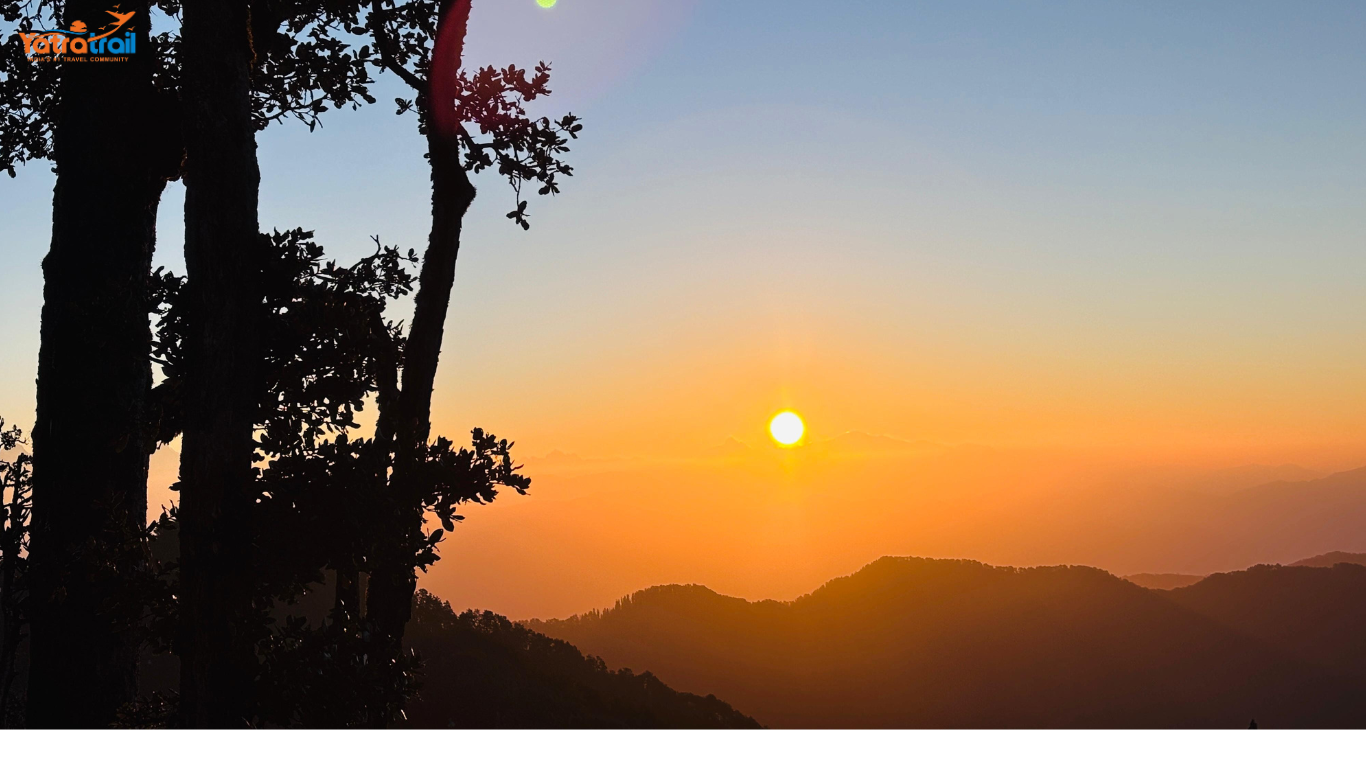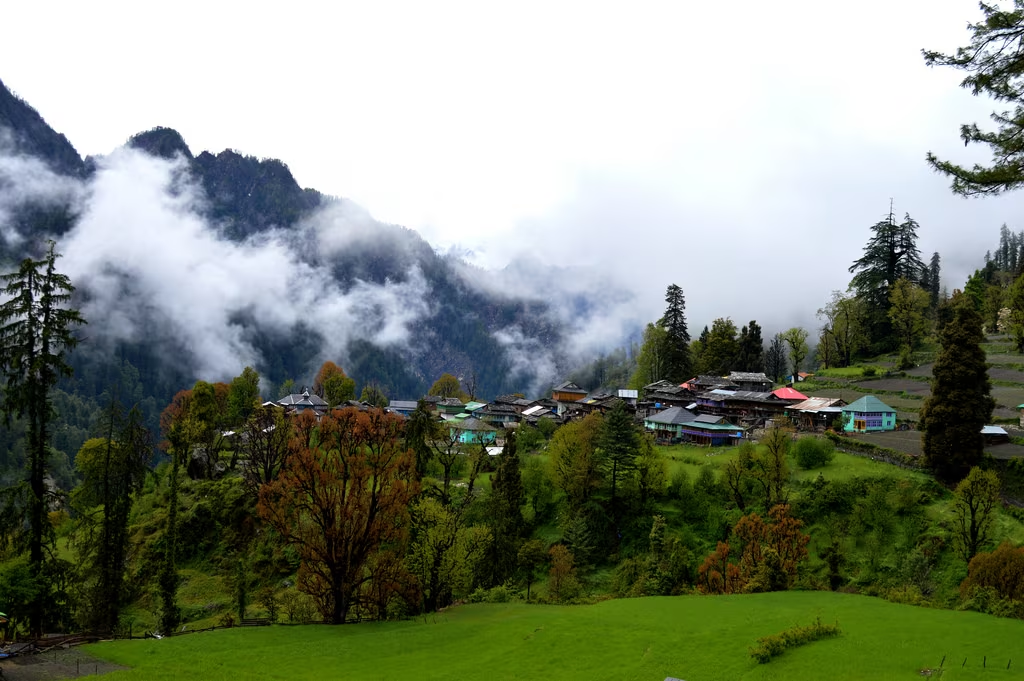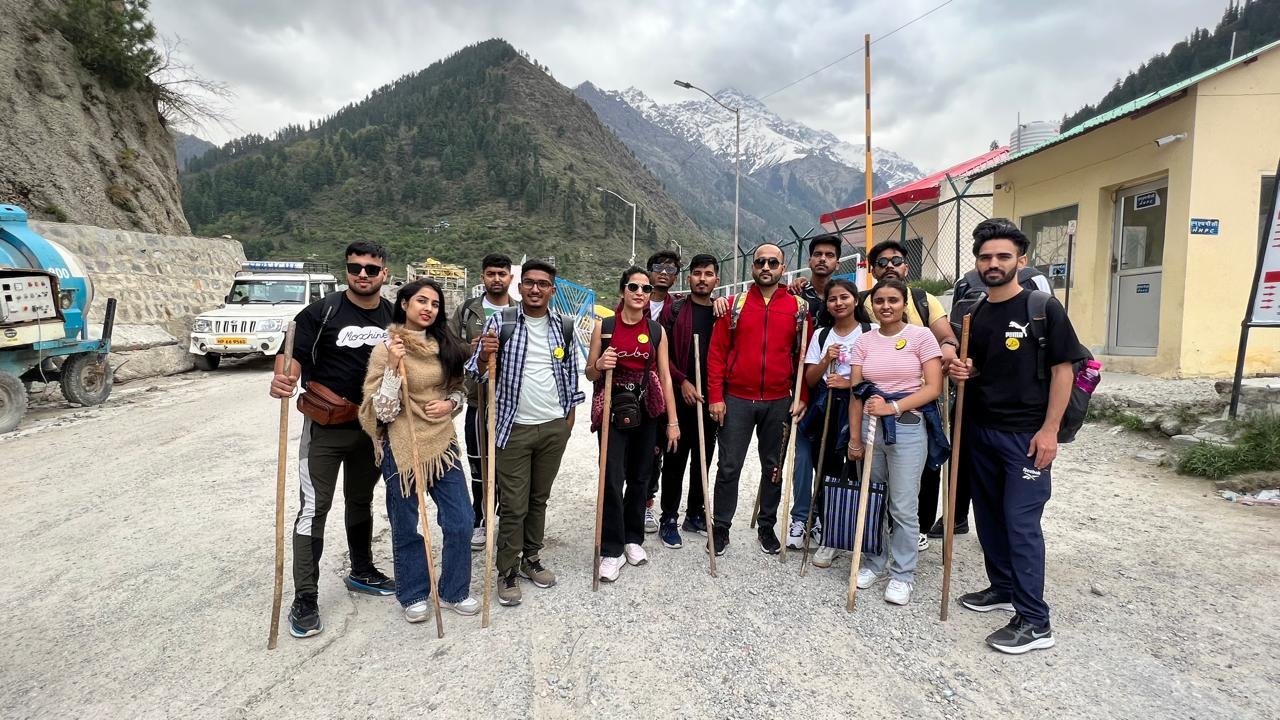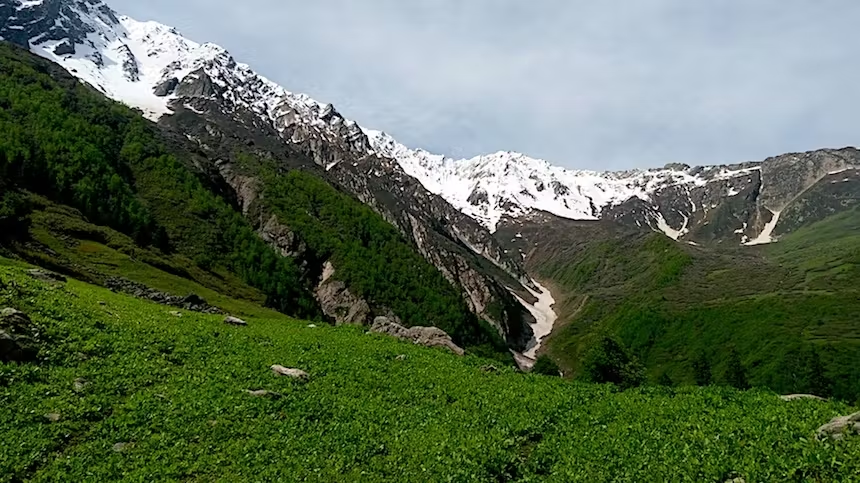Overview - Why Choose Nag Tibba Trek?
Nag Tibba Trek is one of the best short treks in Uttarakhand, offering a perfect blend of adventure and scenic beauty. Ideal for beginners and weekend travelers, this trek takes you through dense oak and rhododendron forests, leading to a breathtaking summit with panoramic views of the Himalayas. Whether you visit in winter for snow-covered landscapes or in summer for lush green trails, Nag Tibba promises an unforgettable trekking experience!
Itinerary
- Arrive in Dehradun early morning and proceed towards Pantwari Village, the starting point of the Nag Tibba trek.
- Enjoy a scenic drive through Mussoorie, passing lush valleys and charming villages.
- Begin the 4-5 hour trek to Nag Tibba Base Camp, walking through dense forests of oak and rhododendron.
- Reach the campsite and settle into your tents. Witness a breathtaking sunset over the Himalayan ranges.
- Enjoy a hot dinner under the starry sky, followed by a bonfire session (weather permitting).
- Overnight stay in tents at Nag Tibba Base Camp.
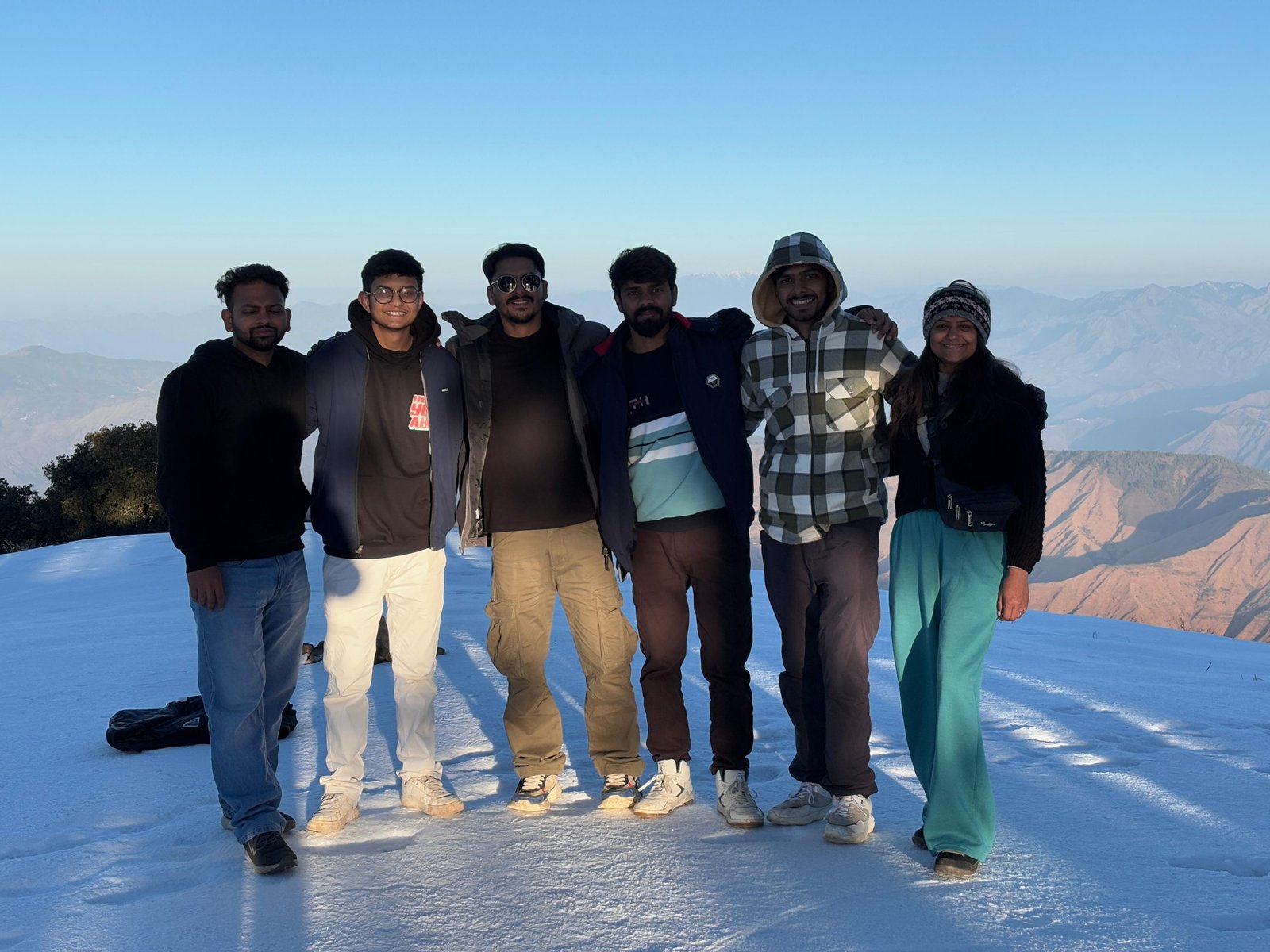
- Wake up early to a mesmerizing sunrise and have a hearty breakfast.
- Begin your trek to the Nag Tibba Summit (9,910 ft)—a steep but rewarding ascent.
- Capture panoramic views of Himalayan peaks like Swargarohini, Bandarpoonch, Kala Nag, and Gangotri.
- Descend back to the base camp, have lunch, and trek down to Pantwari.
- Drive back to Dehradun, marking the end of an unforgettable adventure.
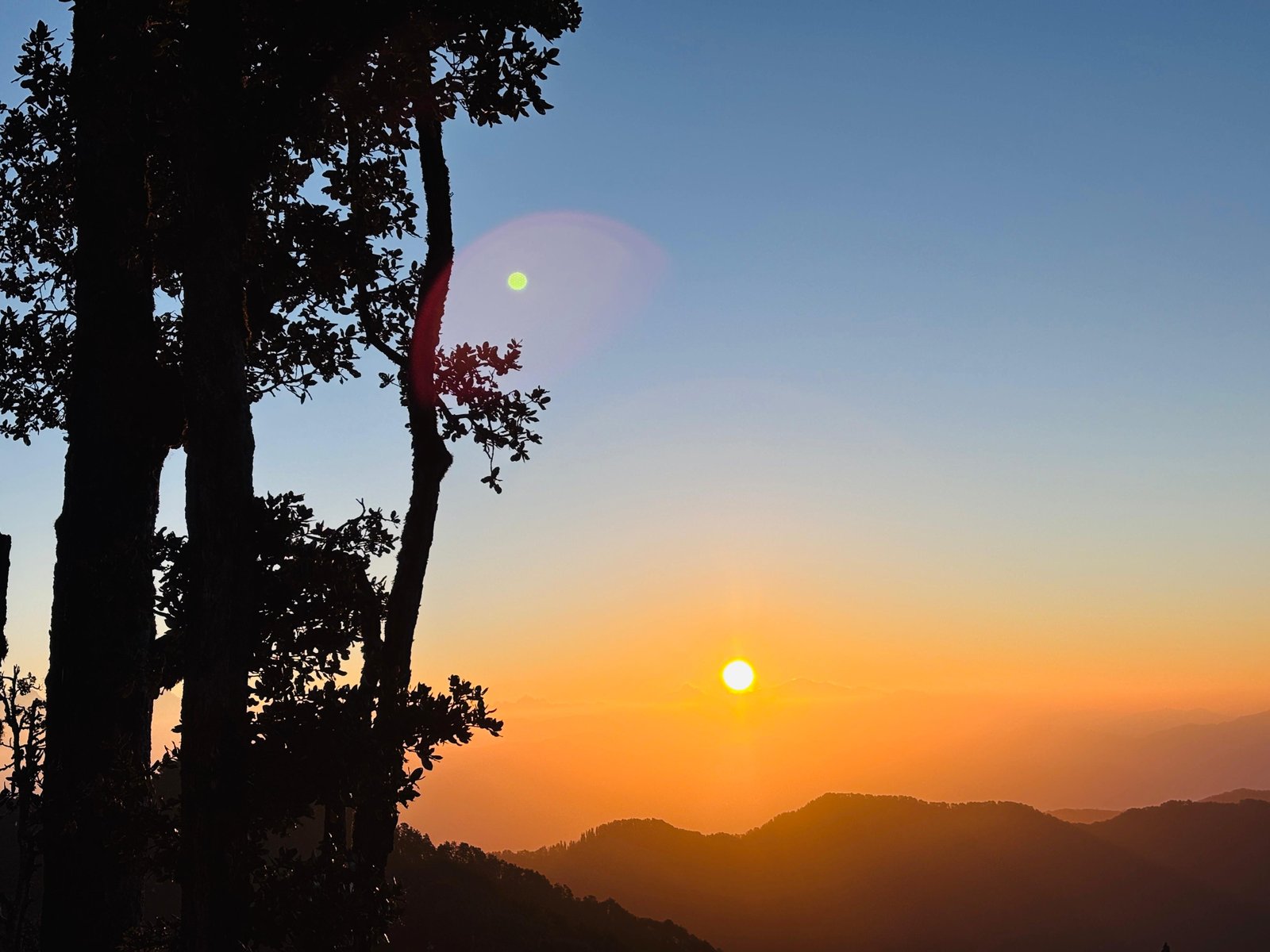
Inclusion And Exclusion
Inclusions:
✔ Accommodation – Stay in comfortable camps with scenic views.
✔ Meals – Nutritious and delicious vegetarian meals during the trek.
✔ Trek Guide – Experienced and certified trek leaders for a safe journey.
✔ Permits & Fees – All necessary forest permits included.
✔ Bonfire (Weather Permitting) – Enjoy a cozy evening under the stars.
✔ First Aid Kit – Basic medical assistance available.
Exclusions:
✘ Transportation – Travel to and from the trek base is not included.
✘ Travel Insurance – Participants must arrange their own insurance.
✘ Emergency Expenses – Any unforeseen costs due to bad weather or medical emergencies.
✘ Personal Porter Charges – Additional cost if you need a porter for your luggage.
✘ Bottled Water – Carry your own refillable water bottle.
✘ Any Personal Expenses – Snacks, beverages, or anything not mentioned in the inclusions.
Other Informations
Clothing & Footwear
- Warm layers (fleece/thermal) and a waterproof jacket
- Comfortable trekking pants (avoid jeans)
- Sturdy trekking shoes with good grip
- Extra pair of socks and gloves
Essentials
- Backpack (with rain cover)
- Water bottle (minimum 2 liters)
- Sunglasses, sunscreen, and a hat/cap
- Lightweight towel and personal toiletries
Trekking Gear
- Trekking pole (optional but helpful)
- Headlamp or flashlight with extra batteries
- Poncho or raincoat
Food & Medication
- Dry fruits, energy bars, and light snacks
- Personal medications and basic first-aid kit
- ORS sachets and pain relief sprays
Documents & Miscellaneous
- Valid ID proof (Aadhar Card/Passport)
- Extra cash for emergencies
- Power bank for charging devices
- Note: Carry only necessary items to keep your backpack light and comfortable for trekking.
Booking Confirmation
- Once the booking is successful, a confirmation voucher will be sent via email within 24 hours.
- If the preferred slot is unavailable, an alternative schedule will be arranged, and a new confirmation voucher will be provided.
- For any assistance regarding booking, our support team is available to help.
Cancellation Policy
- 15 days or more before the trek date: 50% of the advance payment will be charged as a cancellation fee.
- Within 7 days of the trek date: 100% of the advance payment will be charged as a cancellation fee.
- No refunds will be issued for missed departures or unused services during the trek.
Important Notes
- The cancellation policy is applicable to all participants, and no exceptions will be made.
- In case of trek cancellations due to unforeseen natural disasters, landslides, or government restrictions, a partial refund or rescheduling option may be offered at the company’s discretion.
- Any extra costs arising due to sudden cancellations (transportation, lodging, etc.) will not be covered by Yatra Trail.
1. Fitness & Preparation
- The trek involves moderate difficulty with steep ascents, so a basic level of fitness is required.
- Engage in light cardio and leg-strengthening exercises at least two weeks before the trek.
- If you have any medical conditions, consult your doctor before booking.
2. Altitude & Acclimatization
- The trek reaches high-altitude regions, so acclimatization is crucial.
- Stay hydrated and avoid alcohol or smoking to prevent altitude sickness.
- If you experience dizziness or nausea, inform your trek leader immediately.
3. Best Time to Visit
- Ideal months for trekking: March to June and September to December.
- Avoid monsoon season due to slippery trails and unpredictable landslides.
4. Packing Essentials
- Carry a waterproof jacket, sturdy trekking shoes, gloves, and warm layers.
- A lightweight backpack with a rain cover is recommended.
- Bring your own refillable water bottle to minimize plastic waste.
5. Accommodation & Food
- Basic tented accommodation will be provided during the trek.
- Simple vegetarian meals will be served, as food availability in remote areas is limited.
- Electricity and charging points may not be available at campsites.
6. Safety & Trekking Rules
- Always follow your trek leader’s instructions.
- Avoid walking alone and stay with the group at all times.
- No alcohol, smoking, or drugs are allowed during the trek.
- No earphones while trekking for safety reasons.
7. Connectivity & ATM Availability
- Limited or no mobile network coverage at higher altitudes.
- The last ATM is available at the base village, so carry sufficient cash.
8. Responsible Trekking
- Respect nature—do not litter or harm the local flora and fauna.
- Carry back all non-biodegradable waste to the base.
- Support local communities by purchasing from them when possible.
9. Emergency Situations
- Weather conditions can change unexpectedly, causing itinerary modifications.
- In case of medical emergencies, evacuation facilities are available but may take time.
- Extra expenses due to unforeseen circumstances (landslides, roadblocks) are not included in the package.
By following these guidelines, you ensure a safe, enjoyable, and eco-friendly trekking experience. Happy trekking!
The Nag Tibba Trek starts from Pantwari, a small village in Uttarakhand, located near Mussoorie and Dehradun. Pantwari serves as the base camp for the trek and is well connected by road from Dehradun and Mussoorie. Here’s how you can reach the starting point:
1. By Air
- The nearest airport is Jolly Grant Airport, Dehradun, located 85 km from Pantwari.
- From the airport, hire a taxi or take a bus to reach Mussoorie or Dehradun.
- From Dehradun, you can hire a cab or take a local bus to Pantwari village (approx. 3-4 hours).
2. By Train
- The nearest railway station is Dehradun Railway Station, about 85 km from Pantwari.
- Dehradun is well connected by trains from major cities like Delhi, Haridwar, and Rishikesh.
- From Dehradun, take a bus or taxi to Mussoorie or directly to Pantwari village.
3. By Road
- From Dehradun – 85 km | 3-4 hours by road via Mussoorie.
- From Mussoorie – 60 km | 2-3 hours by road.
- From Delhi – 355 km | Overnight journey to Dehradun, then 3-4 hours to Pantwari.
Regular buses and taxis operate from Dehradun ISBT to Pantwari. Alternatively, you can hire a private cab for a more comfortable journey.
4. Starting the Trek
- The Nag Tibba Trek begins from Pantwari village, which is the last motorable point.
- The trek to Nag Tibba summit is 8-10 km long and takes around 5-6 hours to complete.
With easy accessibility from Delhi, Dehradun, and Mussoorie, Nag Tibba is one of the best weekend treks for adventure lovers!
Frequently Ask Questions
1. How difficult is the Nag Tibba Trek?
Nag Tibba is an easy to moderate trek, making it perfect for beginners. The total trek distance is around 16 km (both ways) with a gradual ascent and a few steep sections.
2. What is the best time to do the Nag Tibba Trek?
The best time for the Nag Tibba Trek is October to April for clear skies and snow-covered trails in winter. Monsoon months (July-August) should be avoided due to slippery trails.
3. What is the altitude of Nag Tibba?
Nag Tibba stands at an altitude of 9,910 ft (3,022 m), making it the highest peak in the Lesser Himalayas of Uttarakhand.
4. How long does it take to complete the trek?
It is a 2-day trek, with 5-6 hours of trekking on Day 1 and 2-3 hours of descent on Day 2.
5. Is prior trekking experience required?
No, Nag Tibba is a beginner-friendly trek and does not require prior trekking experience. A basic level of fitness is recommended.
6. What should I pack for the trek?
Essential items include:
- Trekking shoes with a good grip
- Warm clothes (jackets, thermals, gloves, and caps)
- Water bottle (at least 2 liters)
- Raincoat/Poncho (in case of unexpected rain)
- Torch with extra batteries
- Sunglasses & sunscreen
7. What kind of accommodation is provided?
Tents are provided at the campsite on a sharing basis. Basic sleeping bags and mats are included.
8. What kind of food is available during the trek?
Simple vegetarian meals (breakfast, lunch, and dinner) are provided during the trek. It’s recommended to carry dry snacks like energy bars and nuts.
9. Is there mobile network connectivity on the trek?
Mobile network is limited. Jio and BSNL have better connectivity near Pantwari village, but there is no network at the summit or campsite.
10. Is drinking water available on the trek?
Yes, but it is advisable to carry your own refillable water bottle. Water from natural streams is available but should be purified before drinking.
11. What are the transportation options to reach the trek base?
You can reach Pantwari village by road from Dehradun (85 km, 3-4 hours) via public buses, shared cabs, or private taxis.
12. Can I do Nag Tibba Trek in one day?
Yes, but it requires a very early start (around 5 AM from Dehradun) and a fast pace to complete the trek in 8-10 hours. A 2-day trek is recommended for a more enjoyable experience.
13. Is it safe for solo travelers or women trekkers?
Yes, Nag Tibba is a safe trek. It is popular among solo travelers and women trekkers. Traveling with a reputed trekking group is advisable.
14. Will there be snow on the trek?
Yes, Nag Tibba receives snowfall in winter (December to February), making it a great trek for snow lovers.
15. What if I get altitude sickness?
Since Nag Tibba is below 10,000 ft, altitude sickness is rare. Stay hydrated, walk at a steady pace, and inform your trek leader if you feel discomfort.
16. Are there ATMs near the trek base?
The last ATM is available in Mussoorie and Dehradun. Carry sufficient cash as there are no ATMs in Pantwari.
17. Is alcohol or smoking allowed during the trek?
No, alcohol and smoking are strictly prohibited, as they can lead to dehydration and altitude sickness.
18. Can children join the trek?
Yes, children above 7 years can join, provided they are fit and accustomed to walking for long hours.
19. What happens in case of bad weather?
In case of extreme weather conditions, the itinerary may be modified or rescheduled for safety reasons.
20. Why should I choose the Nag Tibba Trek?
Nag Tibba is one of the best weekend treks from Delhi & Dehradun. It offers stunning views of Himalayan peaks like Bandarpoonch, Swargarohini, and Kedarnath, making it a must-visit for nature lovers and adventure seekers!

